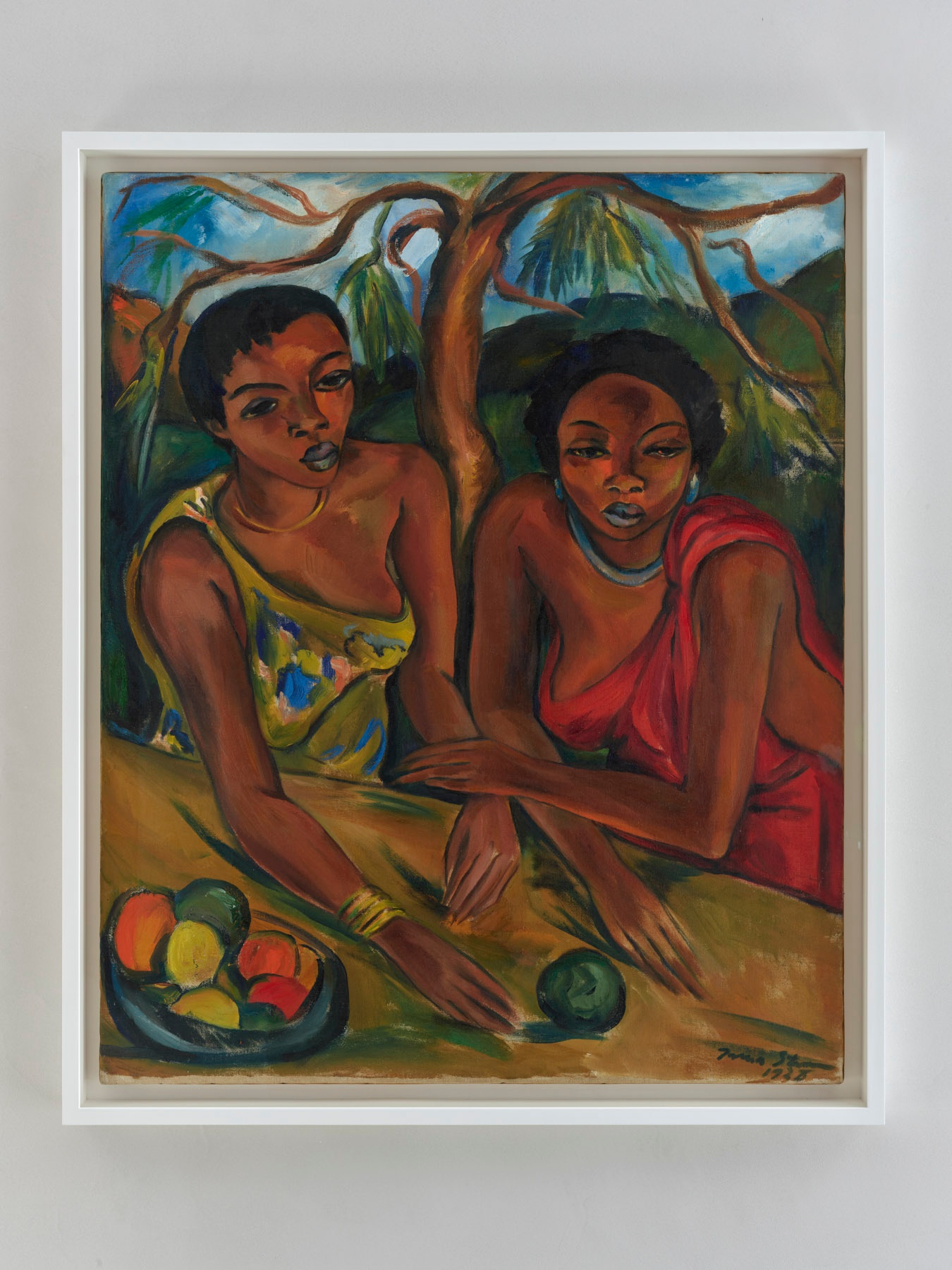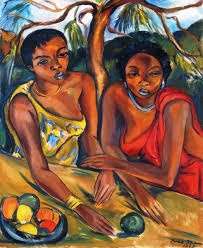Irma Stern

When Stern first exhibited in South Africa in 1920, her modernist aesthetic was mistaken for social radicalism. Having studied in Germany, far from the provincialism of Cape Town, her work was considered an affront to colonial conservatism. She would sell no paintings in her native country until 1931, though she continued to work with much enthusiasm despite mounting criticism. Her palette was deemed too brash, her figuration careless and crude, and her disregard of pictorial conventions tantamount to sin. Disregarded as "agonies in oils", Stern’s many paintings of that decade – such as Swazi Girls with Fruit – had to wait some years for public opinion to catch up to modernism.
b.1894, Schweizer-Reneke; d.1966, Cape Town
Throughout her life, Irma Stern pursued visions of the exotic. She travelled widely in both Europe and Africa and found in the latter reflections of a timeless idyll. Stern was particularly drawn to the otherness of the people she encountered, to – as she wrote – “the hidden depths of the primitive and childlike yet rich soul of the native.” Unconcerned with the particularity of individuals, her paintings of African figures are not so much portraits but rather ethnographic imaginings (to this end, these sitters are seldom ever named). All this considered, there remains a compelling complexity to her paintings. An artist seduced by colour and rhythm, she in turn seduces the viewer. There is a material richness to Stern’s canvas, a sensual pleasure to her impasto paint. While her words more often revealed colonial sentiments and a profound lack of insight into the lives of others, in paint she was redeemed. Stern can perhaps be forgiven for being of her time and, like so many modernists, excused her primitivism. Beauty, above all, was what Stern sought to express, and the lasting influence of her paintings is a testament to her aesthetic achievements. She remains a commanding presence in the South African art world, in death as she was in life.
